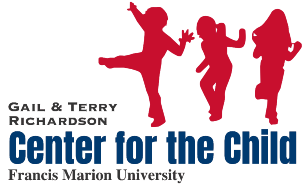CENTER PHILOSOPHY
Teachers and caregivers are expected to base their work on their knowledge of each child’s age and developmental level, his or her individual needs, and the family’s culture. They are to enhance and support children’s intellectual, social, emotional, and physical growth and development, demonstrating their understanding that learning and development are integrated across all domains. Center staff are expected to communicate constructively with children, their parents, and each other. They are to reflect their appreciation for the fact that the organization of the learning environment, the kinds of instructional materials selected, and the curriculum form the most critical elements of a program for young children. The following statements describe how children grow, develop, and learn:
- Children learn best through play and active involvement with the people and materials in their environment.
- Children are developmentally complex persons each with unique temperament, growth and behavior patterns. Each child grows and develops at his or her own individual rate.
- The interactions and the relationships that form between adults and children are the most important components of quality early care and education. Children thrive on supportive, positive, and individualized adult-child interactions. The adult’s role is to stimulate, guide and enhance the development of the whole child.
- The best atmosphere for learning is a pleasant one of acceptance, mutual respect, fairness, consistency, clear limits and expectations, and encouragement.
- Children’s thinking and cognitive abilities are quantitatively and qualitatively different from adults. Neither adult logic nor inappropriate adult expectations shall be imposed on children. Rigid classroom routines (sitting and waiting turns for long periods, lining up) are inappropriate for use with young children.
- Learning is an active process. Children create their own knowledge from the inside out. The environment will provide for active exploration, making free choices, a wide variety of hands-on experiences, and many opportunities to enhance language and early literacy development.
- Children’s learning is integrated. They learn through a variety of experiences using all their senses.
- Children learn responsibility by making age-appropriate decisions and having an appropriate level of responsibility for their actions. A predictable, organized environment with caring adults, clear expectations, and appropriate consequences supports children’s cognitive, physical, social and emotional growth.
- The outdoor play environment is an extension of the classroom, requiring the same level of adult planning, supervision, and involvement with children. Daily outdoor play gives teachers opportunities to interact with the children; plan and carry out specific learning experiences; and share responsibility for the care of the play area. Constant supervision and concern for child safety shall always be a priority.
THE CENTER’S APPROACH TO CURRICULUM
The Center follows the Creative Curriculum for Infants, Toddlers & Twos approach to programming with children from birth through 2 years old and the Creative Curriculum approach to curriculum with older children.
The Creative Curriculum for Infants, Toddlers & Twos
Creative Curriculum teaches that good infant care is neither baby-sitting nor preschool. It is a special kind of care, characterized by respectful, responsive relationships. Infant/toddler caregiving emphasizes child-directed learning. Policies fundamental to this approach include: primary care; small groups; individualized care; cultural responsiveness; and, inclusion of children with special needs. This approach also sees the setting as critical. Creative Curriculum personnel design the environments at the Center to ensure safety, offer infants appropriate developmental challenges, and promote optimum health. For additional information about The Creative Curriculum for Infant, Toddlers & Twos visit www.teachingstrategies.com
Creative Curriculum Approach to Preschool Education
Creative Curriculum is one of four developmentally appropriate approaches to curriculum recommended by the SC Department of Education and endorsed by the University’s Early Childhood Department. It is research-based, and the curriculum areas of social/emotional, physical, cognitive, and language development are well integrated. Creative Curriculum aligns with appropriate SC Learning Standards. It clearly defines the vital role of the teacher in connecting content, teaching, and learning for preschool children. For additional information about Creative Curriculum visit www.teachingstrategies.com
The five components of this preschool curriculum framework are:
- How Children Develop and Learn – what preschool children are like in terms of their social/emotional, physical, cognitive, and language development, and the characteristics and experiences that make each child unique.
- The Learning Environment- the structure of the classroom that makes it possible for teachers to teach and children to learn. This includes how teachers set up and maintain interest areas in the classroom, establish schedules and routines, organize choice times and small- and large-group times, and create a classroom community in which children learn how to get along with others and solve problems peacefully.
- What Children Learn- the body of knowledge included in national and state standards for six content areas—literacy, math, science, social studies, the arts, and technology—and the process skills children use to learn that content.
- The Teacher’s Role- how careful observations of children lead to a variety of instructional strategies to guide children’s learning A systematic approach to assessment enables teachers to learn about and plan for each child and the group.
- The Family’s Role – the benefits of developing a partnership with every family and working together to support children’s optimal development and learning. This includes getting to know families, welcoming them and communication with them regularly, partnering on children’s learning, and responding to challenging situations.
Use of Passive Media
The use of passive media such as television, film, videotapes and audiotapes is limited to developmentally appropriate programming. Use of this media is limited to occasional extreme heat, cold, or rainy days and to no more than 30 minutes. In keeping with the American Academy of Pediatrics recommendation, the Center does not allow children under 2 years of age to watch television.
